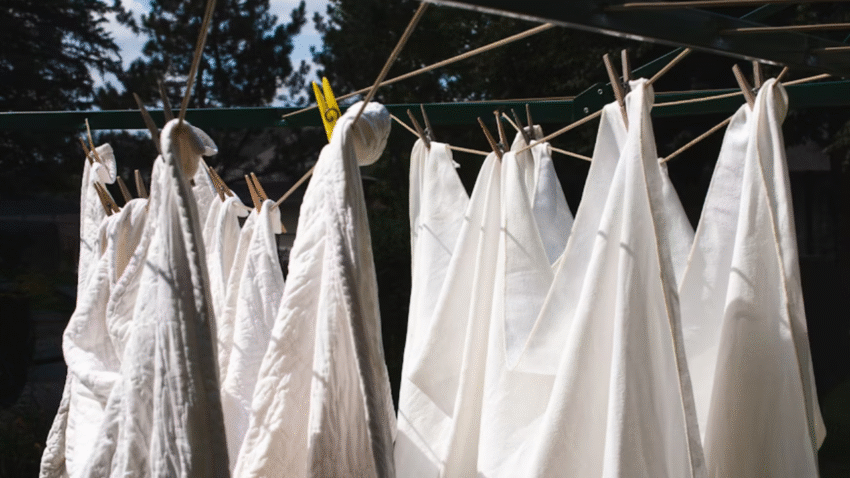Introduction
A farmhouse sink isn’t just for kitchens—it can be a stylish and highly functional upgrade for your laundry room. With its deep basin, durable build, and classic design, a farmhouse sink makes it easier to hand-wash delicate clothes, soak stained items, and handle messy cleaning tasks. This guide will show you exactly how to install a farmhouse sink in a laundry room, from choosing the right sink to hooking up plumbing, so you can enjoy a beautiful and practical upgrade.
Why a Farmhouse Sink Matters in a Laundry Room
Adding a farmhouse sink can improve both form and function in your laundry space:
- Deep Basin: Ideal for soaking and scrubbing laundry or cleaning bulky items.
- Durability: Usually made from fireclay, cast iron, or stainless steel, built to last.
- Timeless Style: Adds a rustic yet elegant look that fits various decor styles.
- Increased Workspace: The apron-front design makes it comfortable to stand closer while working.
With the right installation, a farmhouse sink can transform your laundry room into a more efficient and stylish workspace.
Step-by-Step Guide to Installing a Farmhouse Sink
1. Choose the Right Sink for Your Space
Before buying your sink, consider:
- Size: Measure the width, depth, and height of your intended cabinet or countertop space.
- Material: Fireclay is classic, cast iron is durable, and stainless steel offers a modern touch.
- Mount Type: Farmhouse sinks can be installed as top-mount (drop-in) or under-mount.
- Weight: These sinks can be heavy—ensure your cabinet and supports can handle it.
2. Gather Tools and Materials
Tools:
- Tape measure
- Circular saw or jigsaw
- Drill with bits
- Level
- Wrench set
- Silicone caulk gun
Materials:
- Farmhouse sink
- Sink supports (wooden frame or metal brackets)
- Plumbing kit (P-trap, supply lines, faucet if needed)
- Silicone sealant
- Screws and brackets
3. Prepare the Cabinet and Countertop
- Turn Off Water Supply: Shut off the water to your laundry room sink area.
- Remove Old Sink (if applicable): Disconnect plumbing and lift out the old sink.
- Mark the Cutout: Measure your farmhouse sink dimensions and mark the cutout on the countertop.
- Cut the Opening: Use a jigsaw or circular saw to create the opening, following the manufacturer’s template.
- Build Support Frame: Farmhouse sinks often need a custom support frame inside the cabinet to bear their weight.
4. Build a Sturdy Support System
- Use 2×4 lumber or similar to create a horizontal frame inside the cabinet.
- The frame should hold the sink just below the countertop level for under-mount installations or flush for top-mount.
- Secure the frame to the cabinet walls using screws and corner braces.
5. Dry Fit the Sink
- Place the sink into the opening to check fit and alignment.
- Ensure the front apron sits flush with the cabinet front.
- Adjust support height if necessary before final installation.
6. Install the Sink
- Apply Silicone Sealant: Run a bead of silicone along the countertop edges where the sink will meet.
- Set Sink in Place: Carefully lower the sink into the opening and onto the support frame.
- Check for Level: Use a spirit level to ensure the sink is even—adjust if needed.
- Secure Sink: Depending on your model, secure with clips, brackets, or let it rest firmly on the frame and silicone.
7. Connect the Plumbing
- Install Faucet (if not already in place): Follow the manufacturer’s instructions.
- Connect Water Supply Lines: Attach hot and cold lines to the faucet.
- Install Drain Assembly: Apply plumber’s putty around the drain flange, insert into sink, and secure from underneath.
- Attach P-Trap and Waste Pipe: Connect to the existing drain line, tightening connections with a wrench.
8. Seal and Finish
- Apply a final bead of silicone around the edges where the sink meets the countertop.
- Wipe away excess with a damp cloth before it cures.
- Allow 24 hours for silicone to fully set before heavy use.
Common Mistakes to Avoid
- Skipping the Support Frame
- Mistake: Farmhouse sinks are heavy; without proper support, cabinets can warp.
- Solution: Always build a sturdy frame before installation.
- Incorrect Measurements
- Mistake: A sink that doesn’t fit properly can lead to costly adjustments.
- Solution: Measure twice and follow the manufacturer’s cutout template.
- Poor Sealant Application
- Mistake: Gaps can lead to water damage over time.
- Solution: Apply silicone evenly and check for missed spots.
- Improper Leveling
- Mistake: A tilted sink affects drainage and appearance.
- Solution: Use a level during installation and adjust supports if needed.
- Forgetting Plumbing Alignment
- Mistake: Misaligned drains cause leaks or improper flow.
- Solution: Dry fit plumbing before sealing everything in place.
Extra Laundry Room Tips for Farmhouse Sink Owners
- Add a Pull-Down Faucet: Makes rinsing and filling easier.
- Use a Sink Grid: Protects the bottom from scratches and chips.
- Install a Soap Dispenser: Keeps counters clutter-free.
- Combine with Open Shelving: Store laundry supplies nearby for convenience.
- Keep a Stain-Soaking Tub Handy: Perfect for pre-treating laundry before it goes in the wash.
For more laundry room upgrades, check out our “How to Build a Custom Laundry Countertop Over Washer and Dryer” guide to pair with your new farmhouse sink.
Conclusion
Learning how to install a farmhouse sink in a laundry room is a manageable DIY project that adds style, function, and durability to your space. By carefully measuring, building a proper support frame, and sealing everything correctly, you can create a sink area that lasts for years and makes laundry tasks much easier.
Pro Tip: If cutting into stone or quartz countertops, consider hiring a professional to ensure precision and avoid costly mistakes.
Bookmark this guide so you can confidently install your farmhouse sink and give your laundry room a beautiful upgrade.
